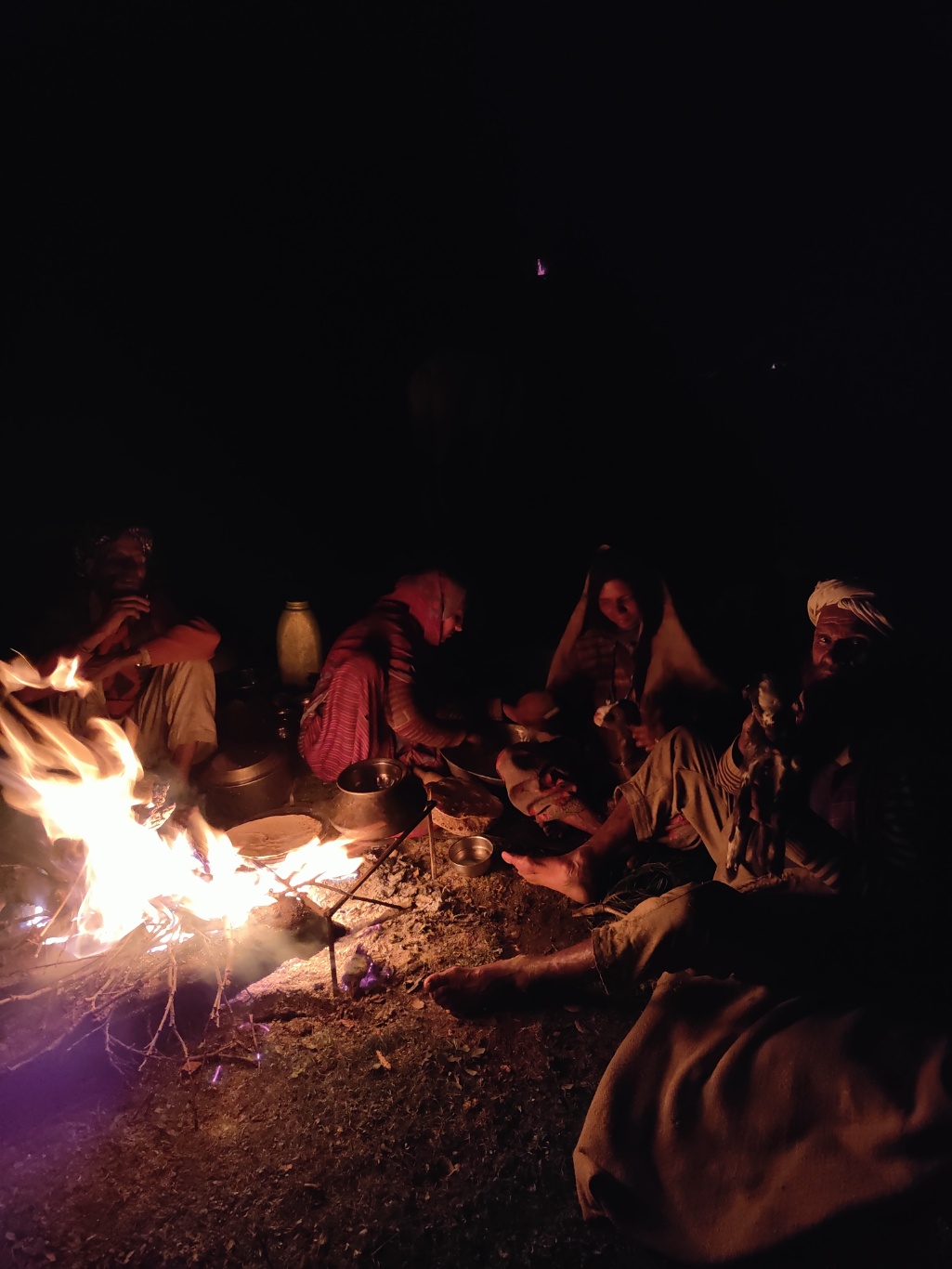The night was peaceful on a raised bed of leaves in one of the wood homes of the isolated dwelling of Suked, high above the Sewa river valley. I woke up at 6:30am as light entered my shelter, packed up my gears and was on my way.
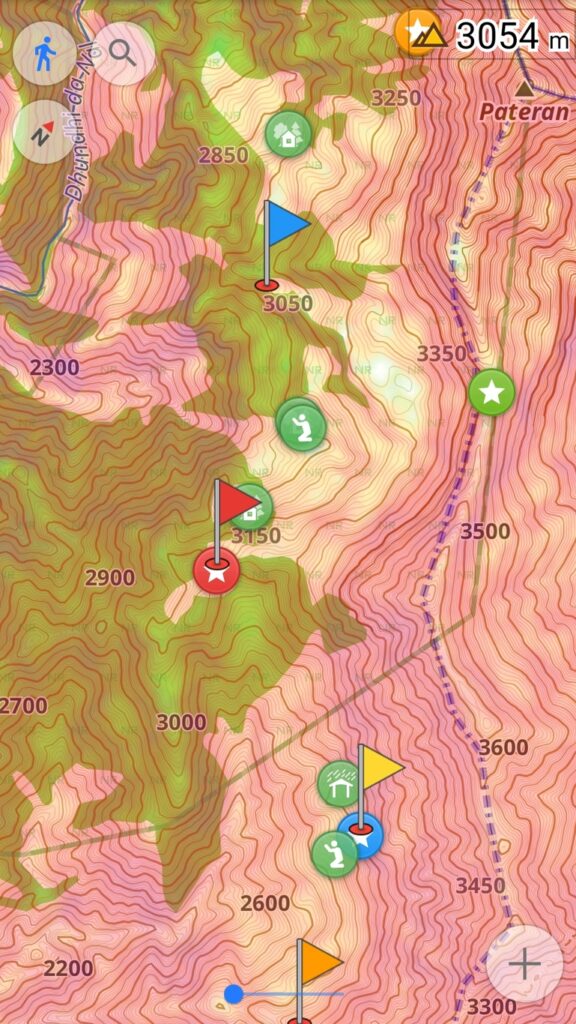
Today’s plan was to continue along a trail contouring 500m below the steep ridgeline bypassing the Pateran and Batile peaks above. As per the Survey map there was no trail on top so I had come down the previous evening.
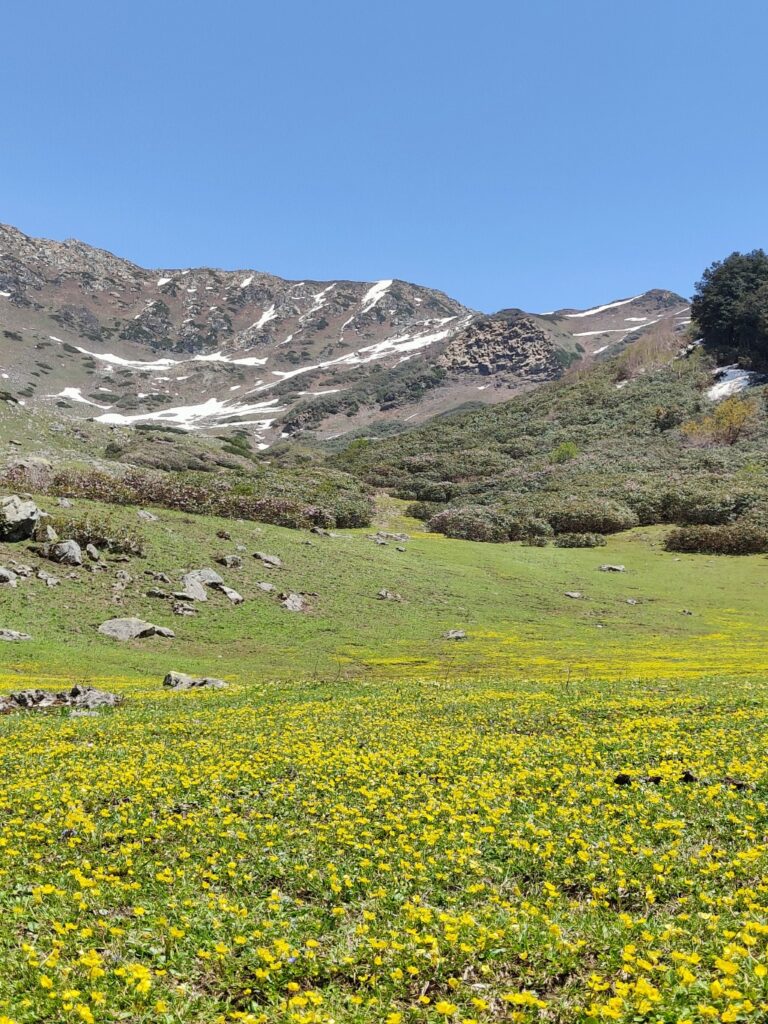
A clear trail contoured around 3000m through open meadows, hopping across side ridgeline-s into adjacent side valleys of the Sewa river valley. I lost the trail a few times as it faded out in the meadows but was able to correct soon by referencing the Survey map.
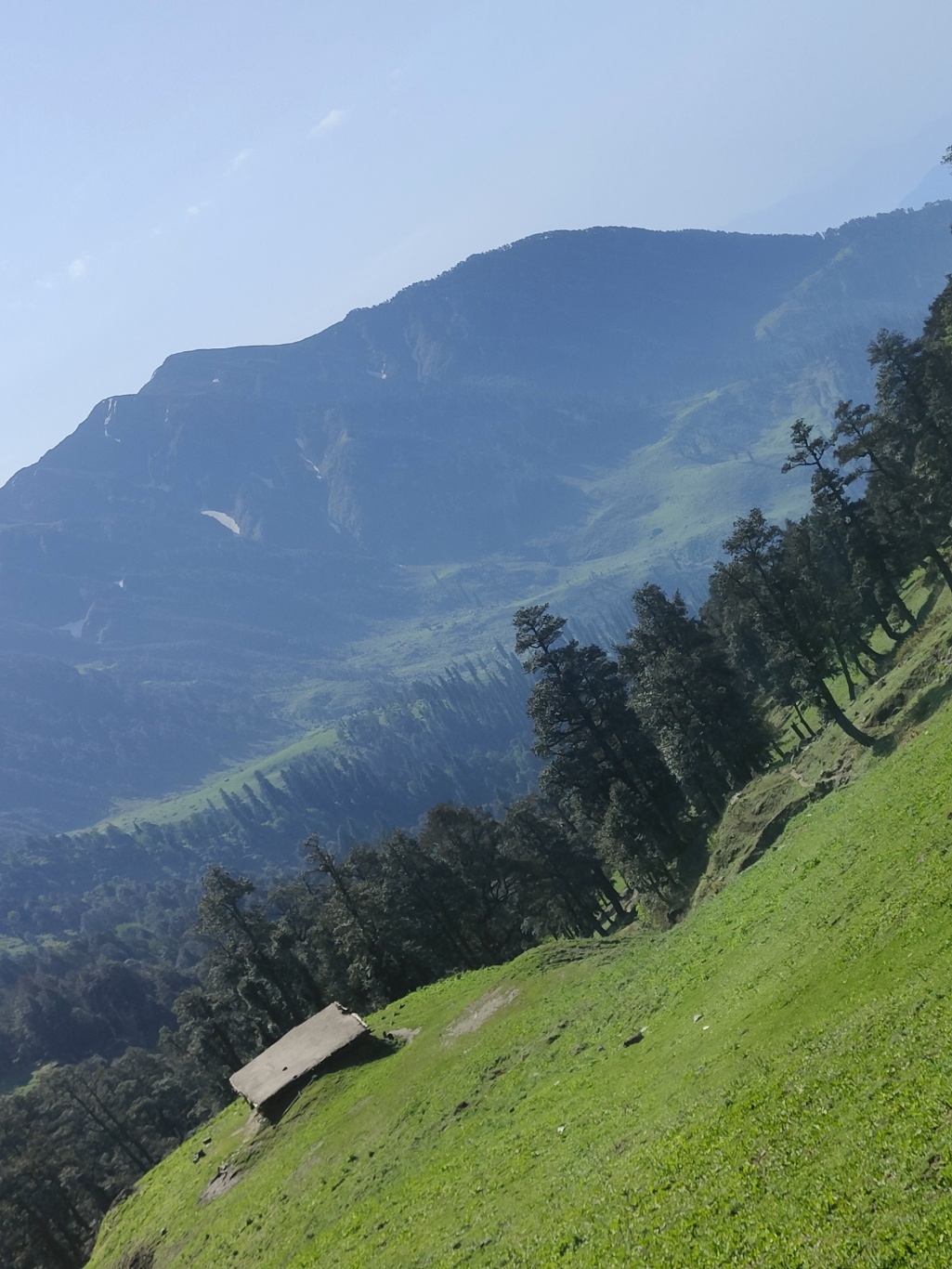
The meadows were deserted. Looks like the shepherds had not yet come up mid May. Periodically I passed through remote dwellings, all of which were uninhabited. I came across several ruins of carbon fibre iglos probably used earlier by police.
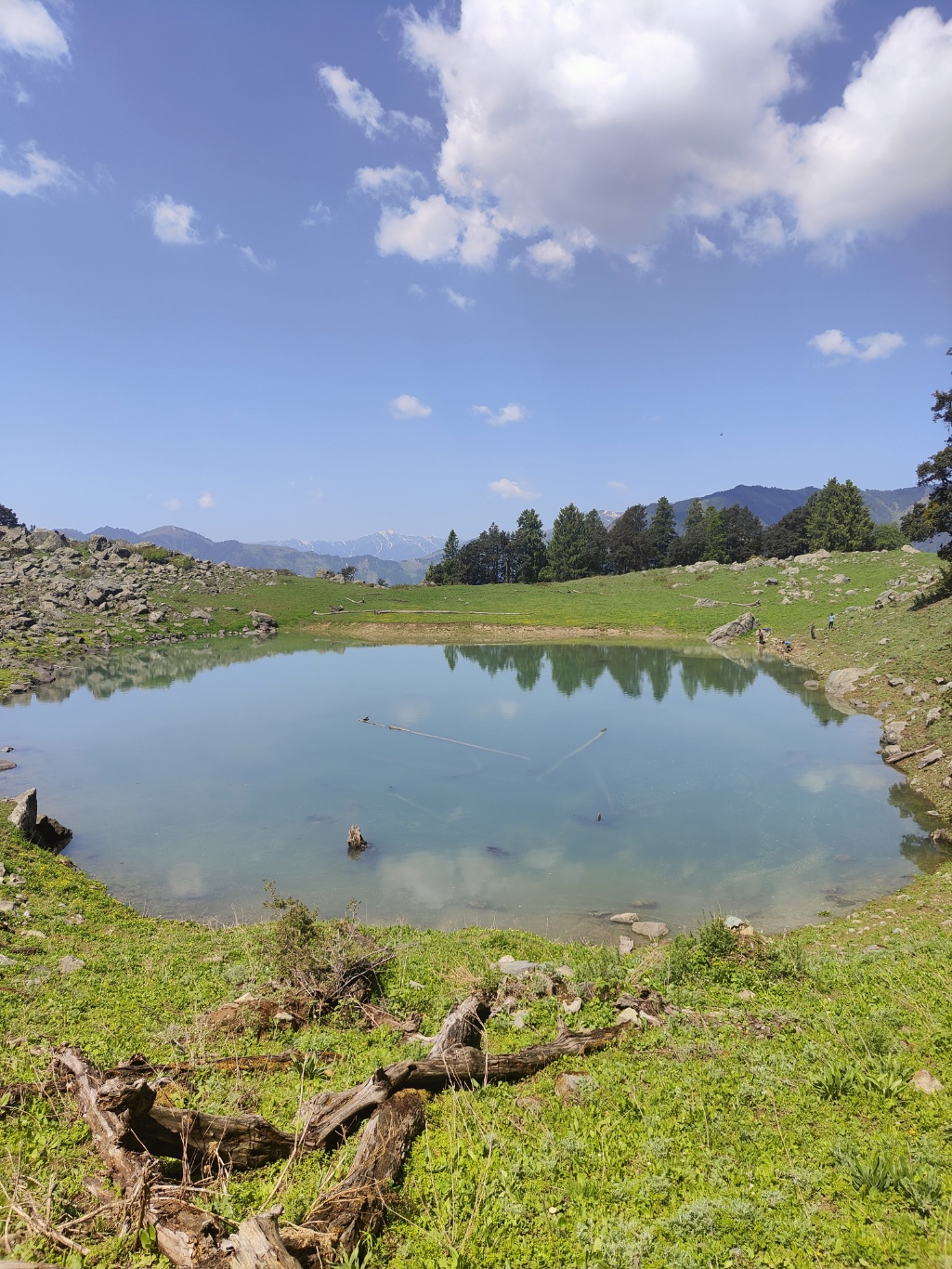
Hiking along a contouring trail was much easier then following a ridgeline with continuous ascents / descents. First contact came with a gujjar guiding his buffaloes to a beautiful alpine lake. The animals were eager to swim in the cold water.
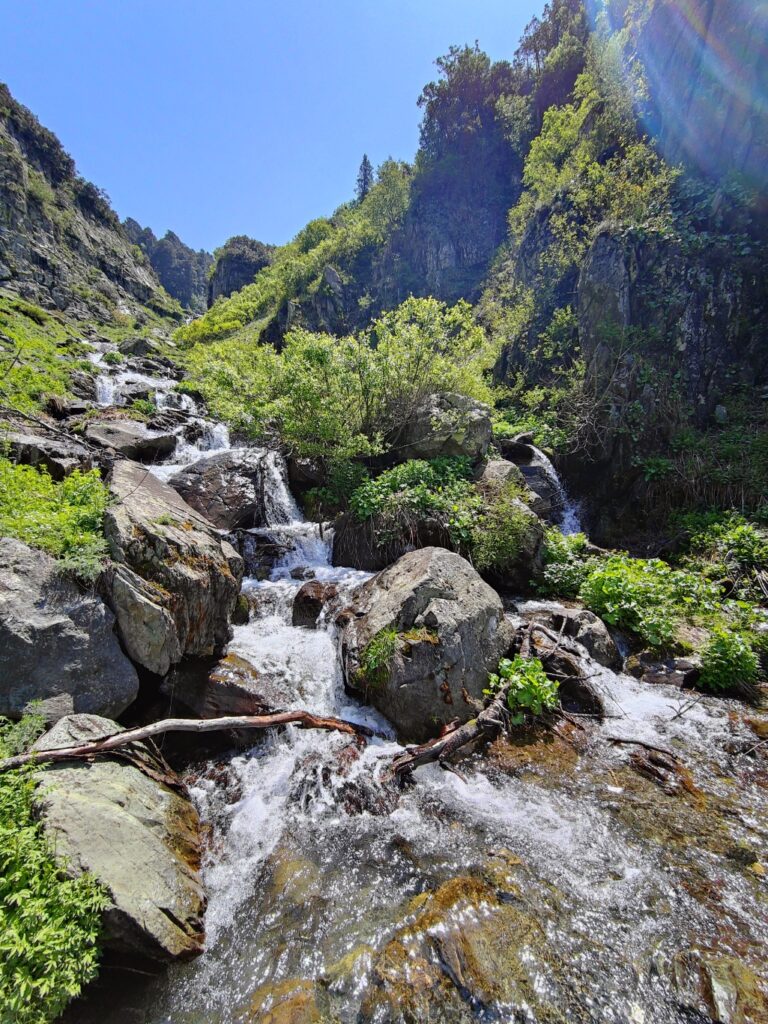
Countless small streams were dropping from the ridgeline above carrying fresh snow melt water. It was such a beautiful eco system. The trail was climbing up and descending across small ridgeline-s and gullies.
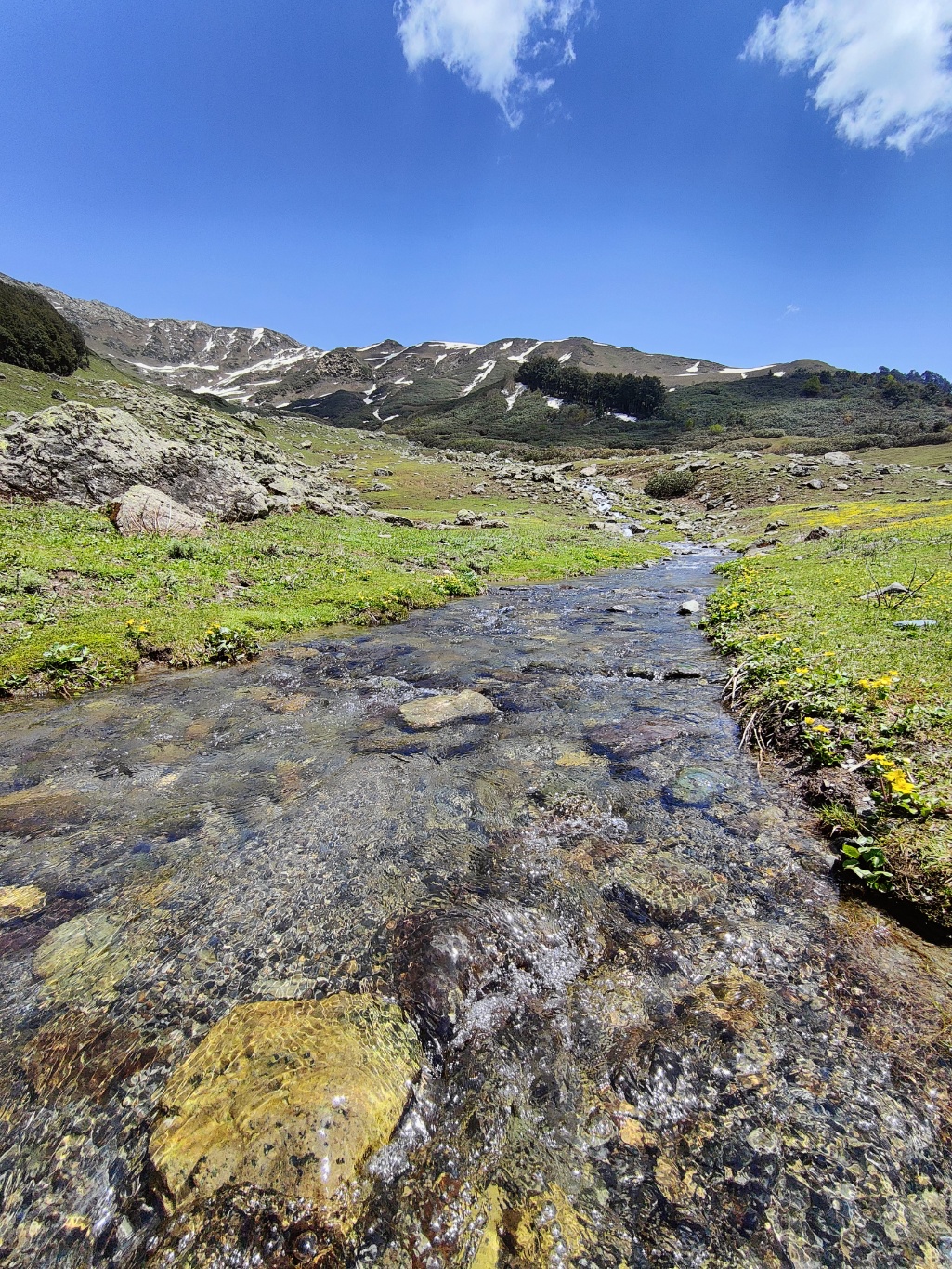
After Batile peak the path joined the top ridgeline hopping across small hillocks and saddles. I finally came across a few shepherds grazing the high slopes. The North face of the 3400m ridgeline was still covered by winter snow.
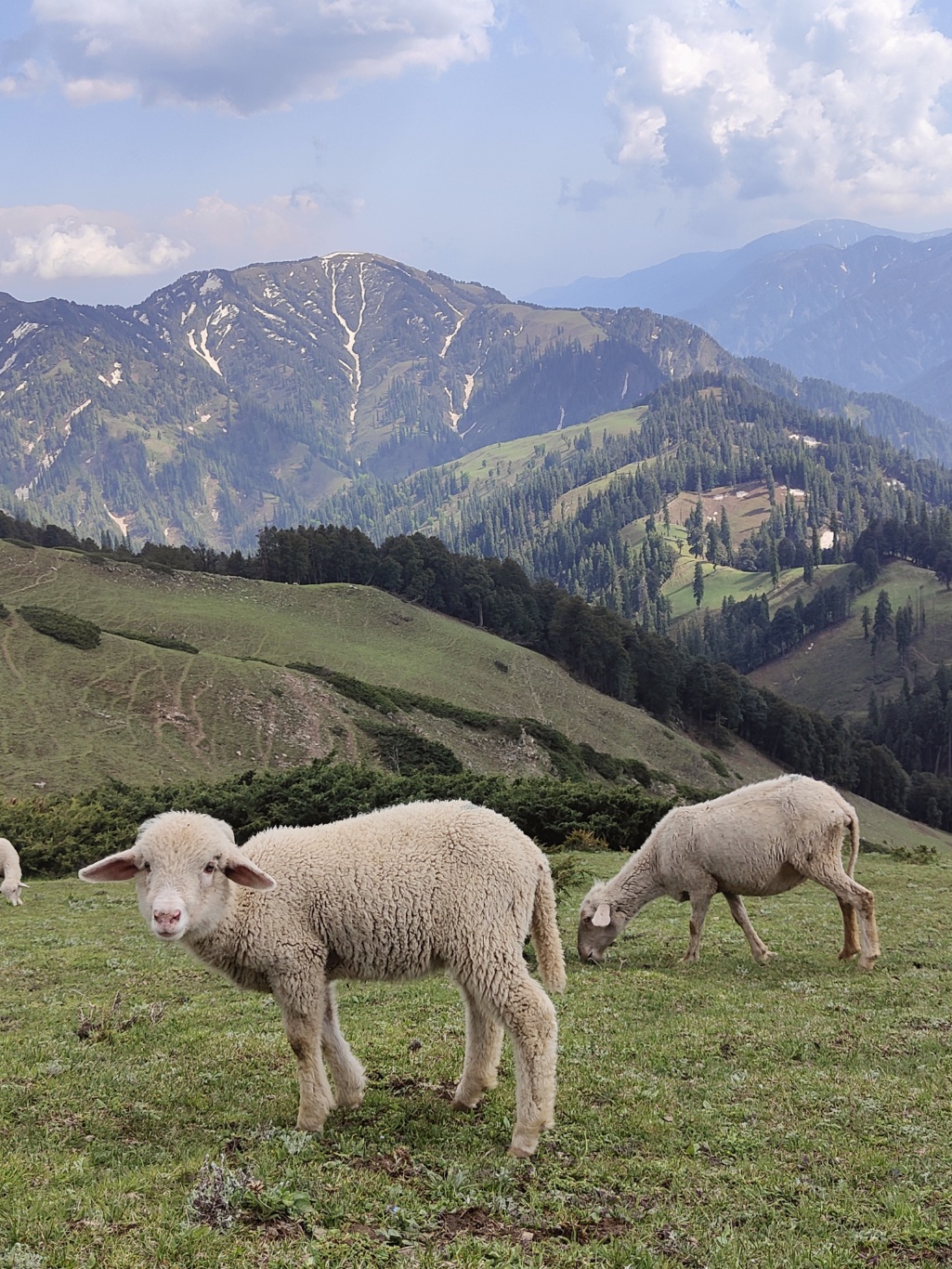
At the Mahsan Gatti pass I descended into a mesmerizing valley. A small stream was peacefully flowing through a long flat valley with lush green open meadows bordered by forested slopes. Mid way stood a beautiful temple.
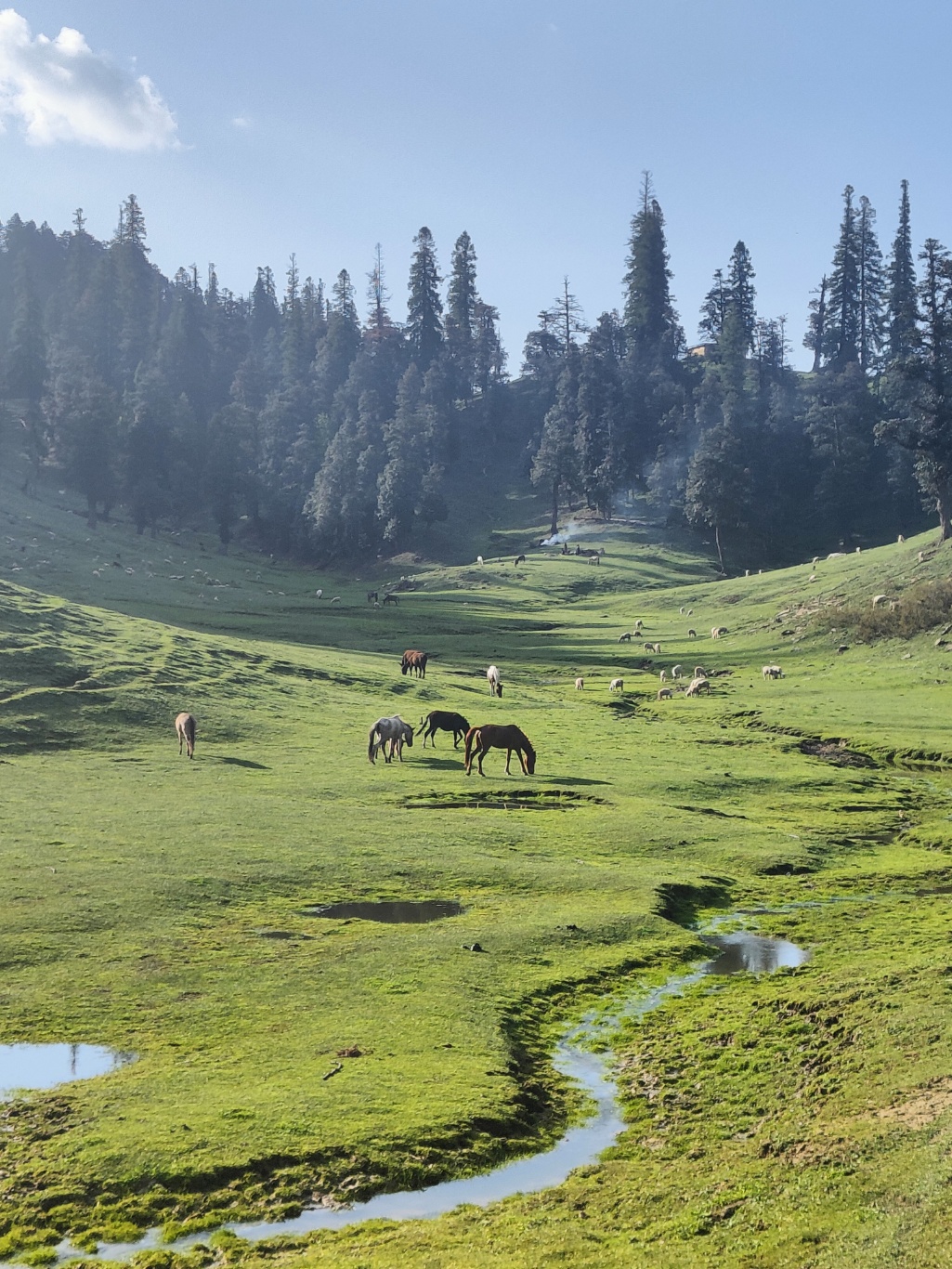
The trail took a turn entering an equally beautiful side valley full of life. Hundreds of sheep and goat, several horses were grazing around the scenic campsite of a few gujjars. I immediately felt at home, perfect spot for the night halt.
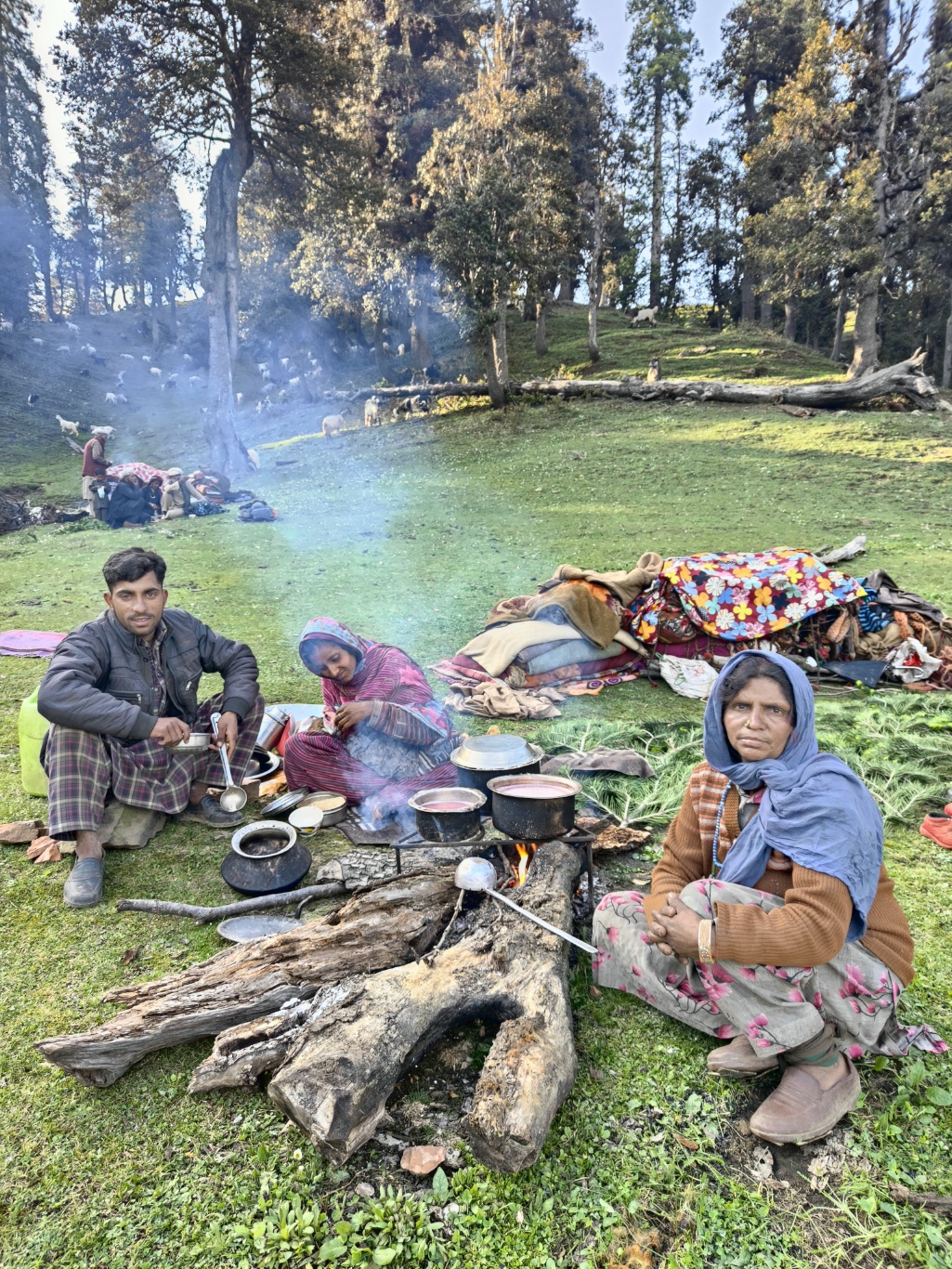
The gujjars were welcoming, giving me tea and rottis. The entire family – men with turbans and big beards, women wearing jewellery preparing food, kids playing around the meadows. A young horse was wearing a jacket for the cold nights.
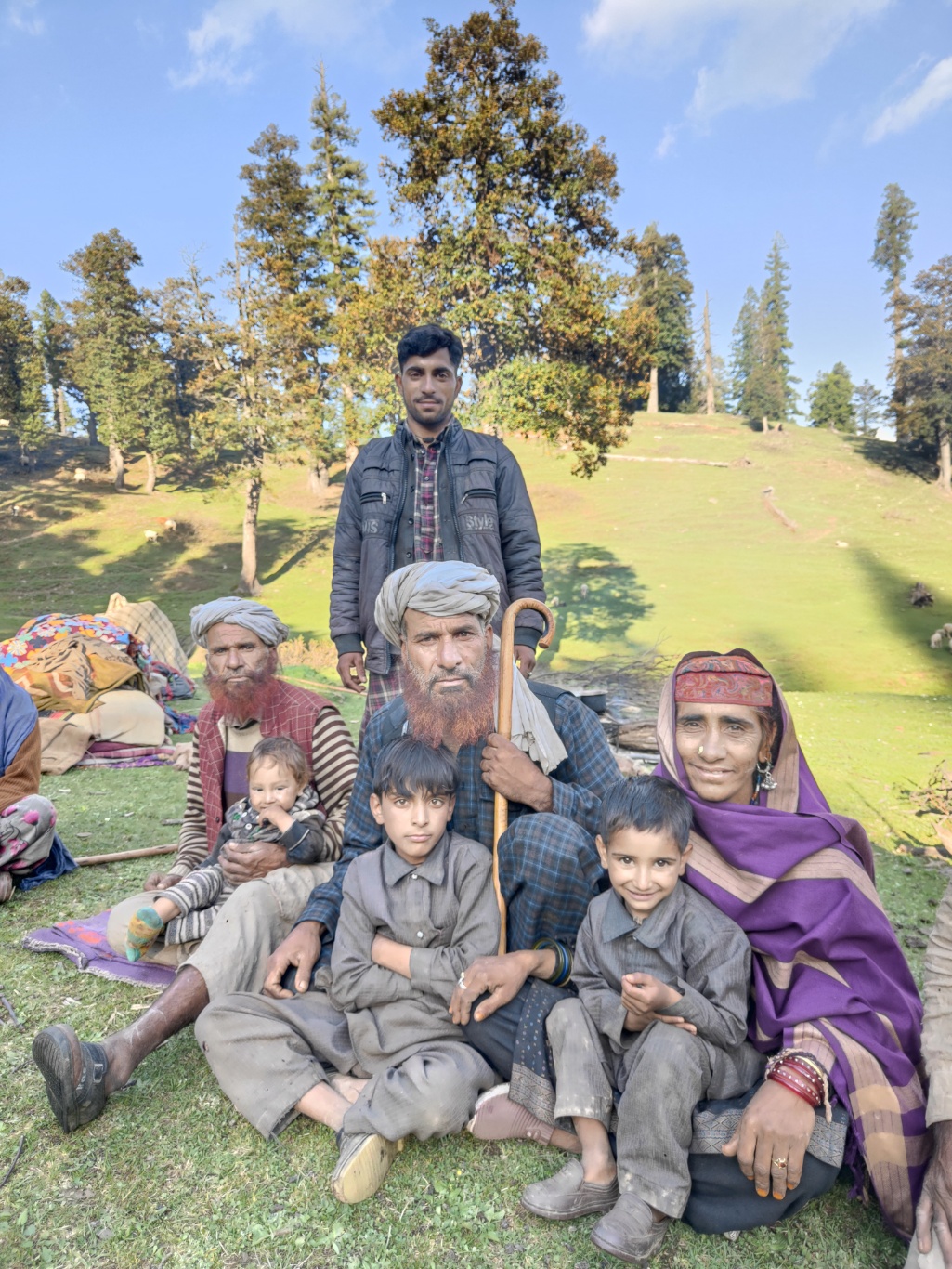
As the night fell, the gujjars lit up a campfire and assembled the herd near the campsite. Some 5 dogs were guarding the herd from nocturnal predators roaming the surrounding forests.
